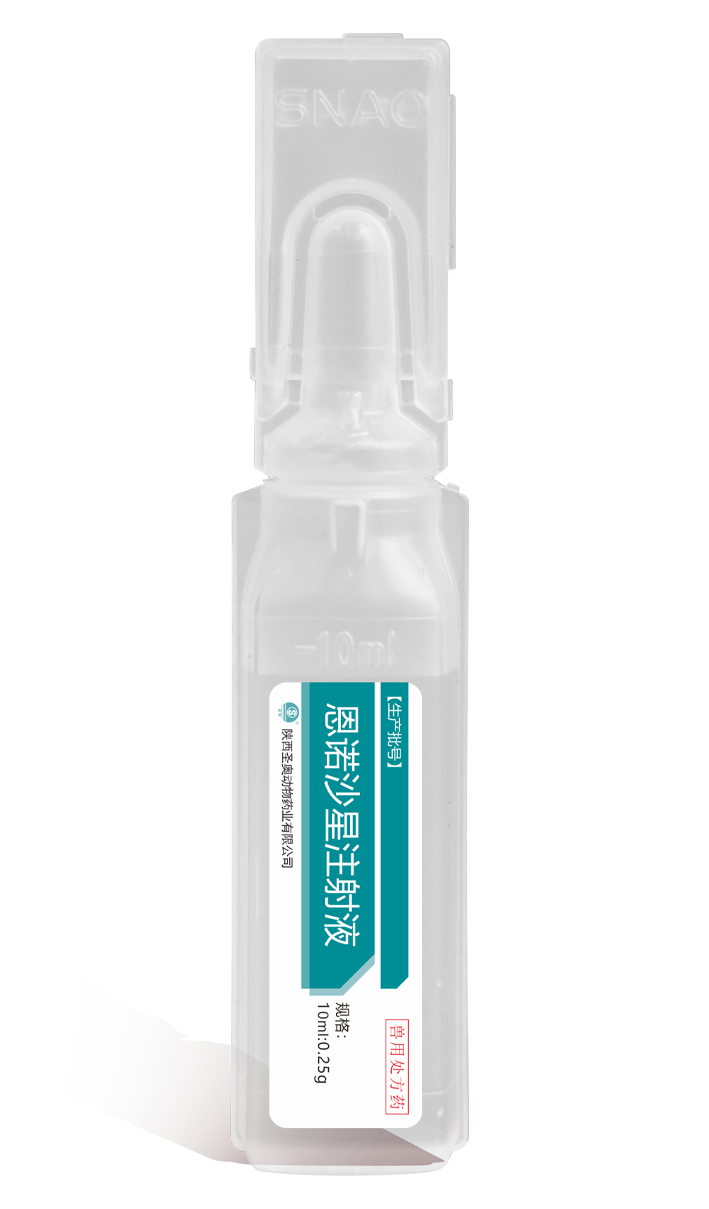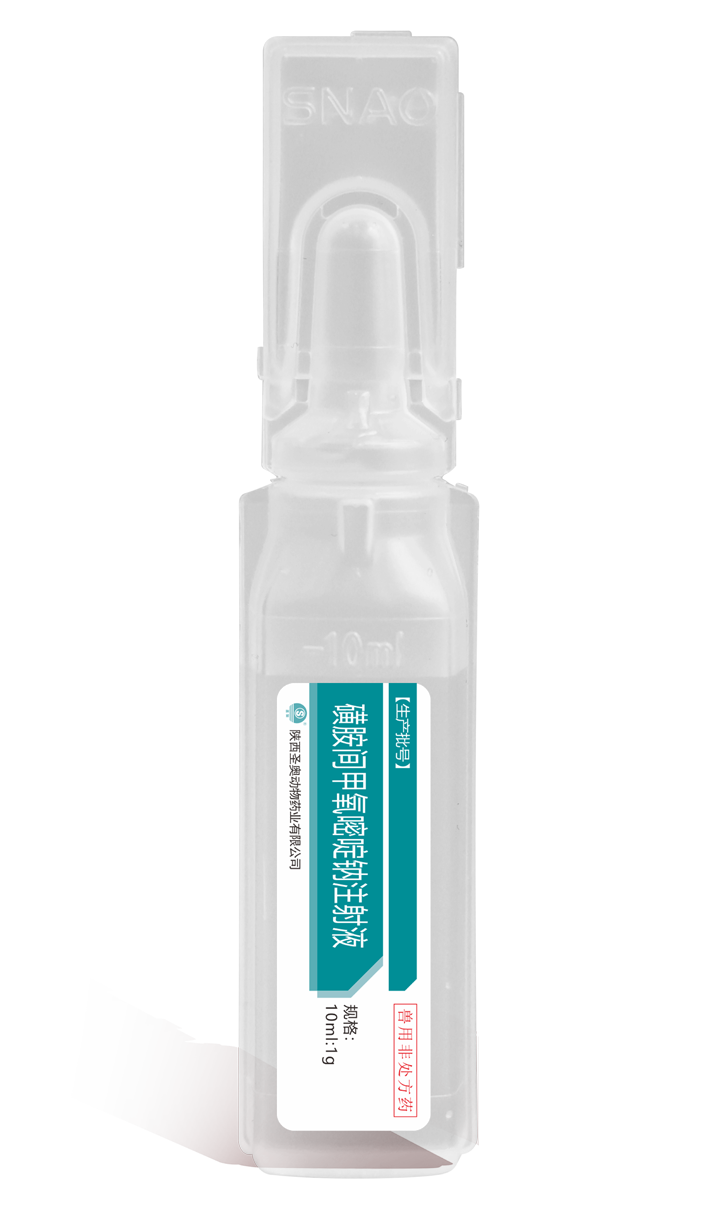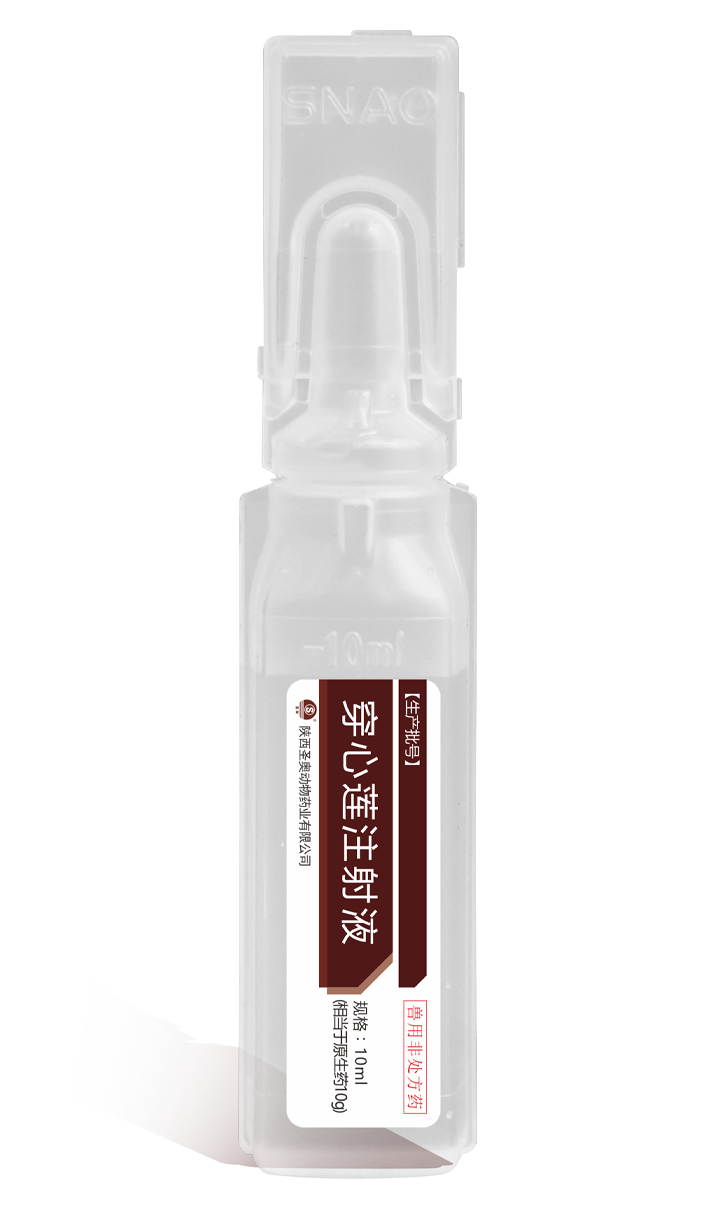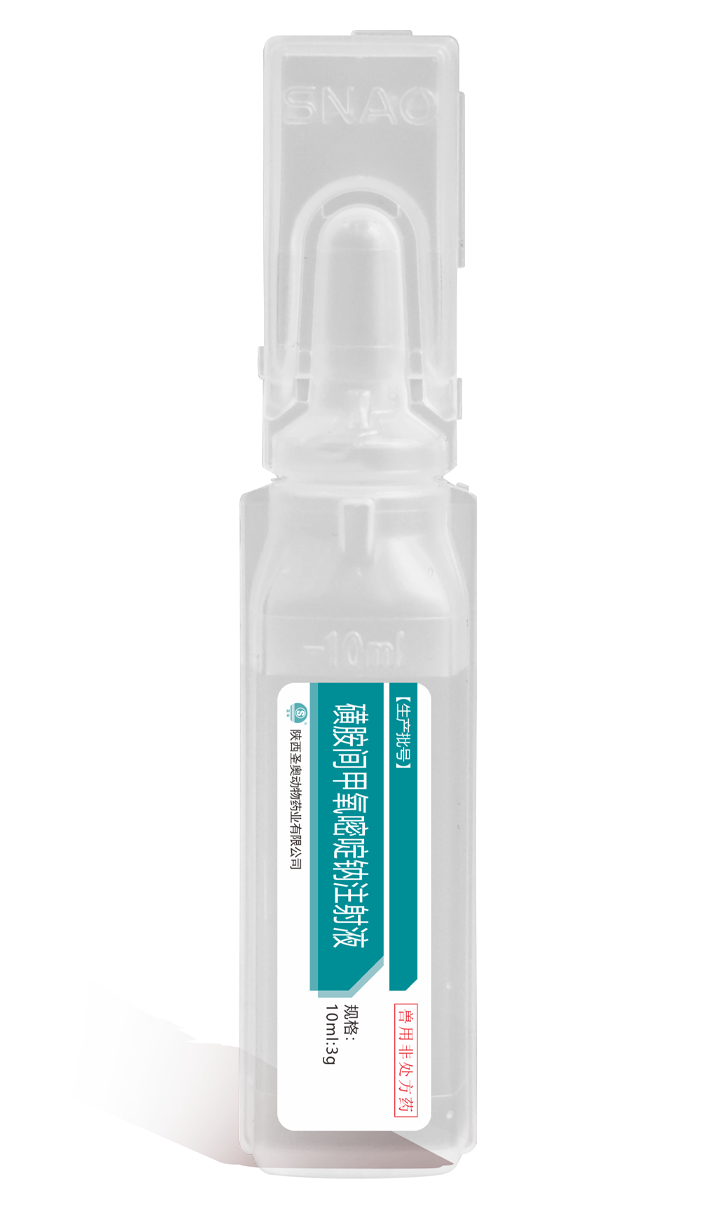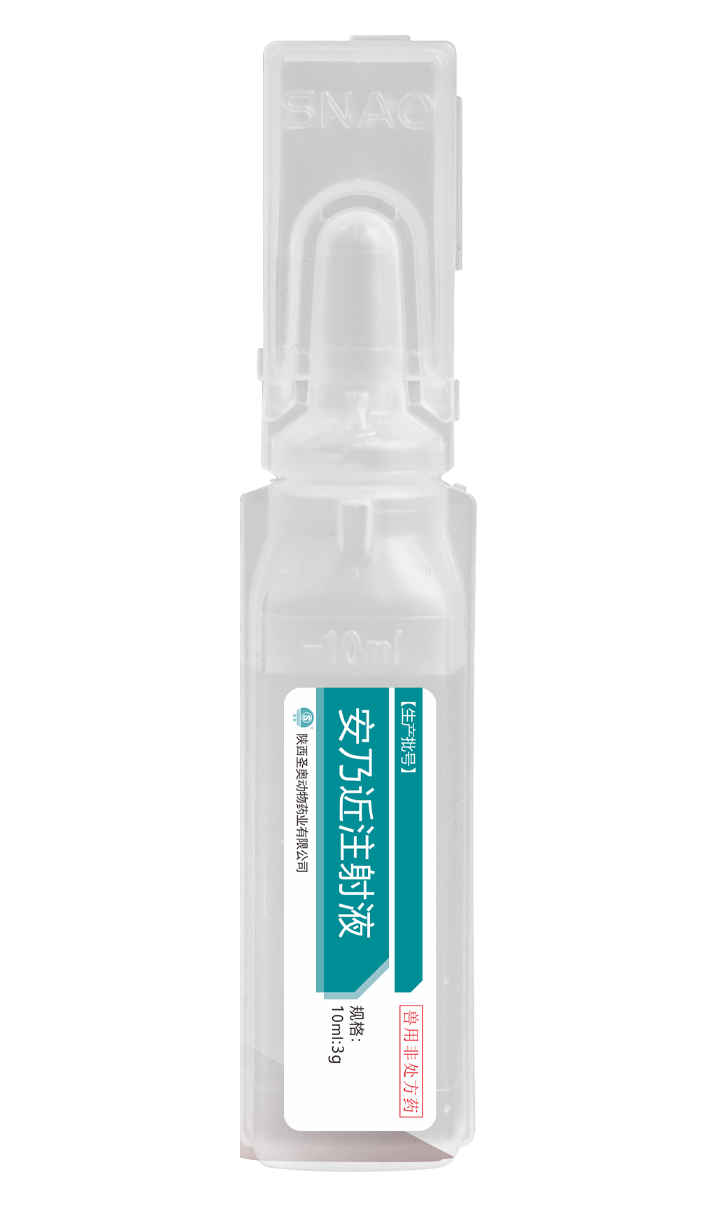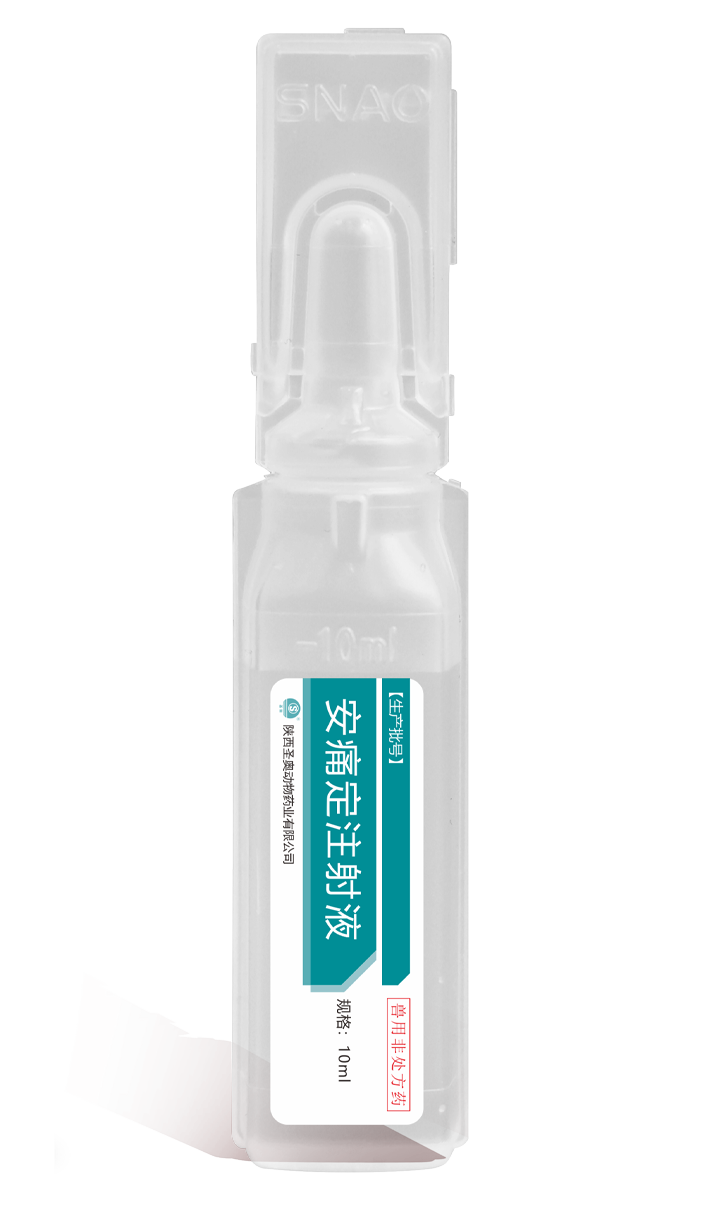
Enrofloxacin Injection
Key words:
Classification:
Detailed Description
[main component] Enrofloxacin
[properties] this product is colorless to light yellow clear liquid.
[pharmacological action]
Pharmacodynamics enrofloxacin is a broad-spectrum bactericide for fluoroquinolones. It has good effects on Escherichia coli, Salmonella, Klebsiella, Brucella, Pasteurella, Actinobacillus pleuropneumoniae, Erysipelothrix, proteus, Serratia marcescens, Corynebacterium pyogenes, baumannia septicum, Staphylococcus aureus, mycoplasma and Chlamydia trachomatis, but weak effects on Pseudomonas aeruginosa and Streptococcus, and weak effects on anaerobic bacteria. It has obvious antibacterial effect on sensitive bacteria. The antibacterial mechanism of this product is to inhibit bacterial DNA gyrase, interfere with the replication, transcription, repair and recombination of bacterial DNA, and the bacteria cannot grow and reproduce normally and die.
Pharmacokinetics the drug was absorbed rapidly and completely by intramuscular injection. The bioavailability was 91.9% in pigs and 82% in cows. It is widely distributed in animals and can enter tissues and body fluids well. Except cerebrospinal fluid, the drug concentration in almost all tissues is higher than that in plasma. The main metabolism of liver is to remove the ethyl of 7-piperazine ring to produce ciprofloxacin, followed by oxidation and glucuronic acid binding. It is mainly discharged through the kidney (secretion by renal tubules and glomerular filtration), and 15% -50% is discharged from the urine in its original form. The elimination half-life after intramuscular injection was 5.9 hours in dairy cows, 1.5-4.5 hours in sheep and 4.6 hours in pigs.
[drug interactions]
(1) This product has synergistic effect with aminoglycosides or broad-spectrum penicillin.
(2) Heavy metal ions such as ca2+, mg2+, fe3+and al3+can chelate with the product and affect absorption.
(3) When combined with theophylline and caffeine, the plasma protein binding rate decreased, the concentration of theophylline and caffeine in blood increased abnormally, and even the symptoms of theophylline poisoning occurred.
(4) This product has the effect of inhibiting liver drug enzymes, which can reduce the clearance rate of drugs mainly metabolized in the liver and increase the blood drug concentration.
[function and use] quinolones. For livestock and poultry bacterial diseases and mycoplasma infection.
[usage and dosage] intramuscular injection: one dose, 0.1ml per 1kg body weight of cattle, sheep and pigs; 0.1-0.2ml for dogs, cats and rabbits. 1-2 times a day for 2-3 days.
[adverse reactions]
(1) It can cause cartilage degeneration in young animals, affect bone development and cause claudication and pain.
(2) The reactions of digestive system include vomiting, anorexia, diarrhea, etc.
(3) Skin reactions include erythema, pruritus, urticaria and photosensitive reaction.
(4) Allergic reactions, ataxia and seizures were occasionally seen in dogs and cats.
[precautions]
(1) It has potential excitatory effect on the central system and induces seizures. It should be used with caution in dogs with epilepsy.
(2) Carnivores and animals with renal dysfunction should be used with caution. Crystallized urine may occur occasionally.
(3) This product is not suitable for dogs before 8 weeks of age.
(4) The drug-resistant strains are increasing, and should not be used for a long time under the sub therapeutic dose.
[drug withdrawal period] 14 days for cattle and sheep, 10 days for pigs and 14 days for rabbits.
[Specification] 10ml:0.25g
[package] 10ml × 10 pieces/box
Related Products

Contact Information
Contact Address

Address: Jinghe Xincheng Jingyong Road Middle Industrial Park, Xixian New District, Shaanxi Province


